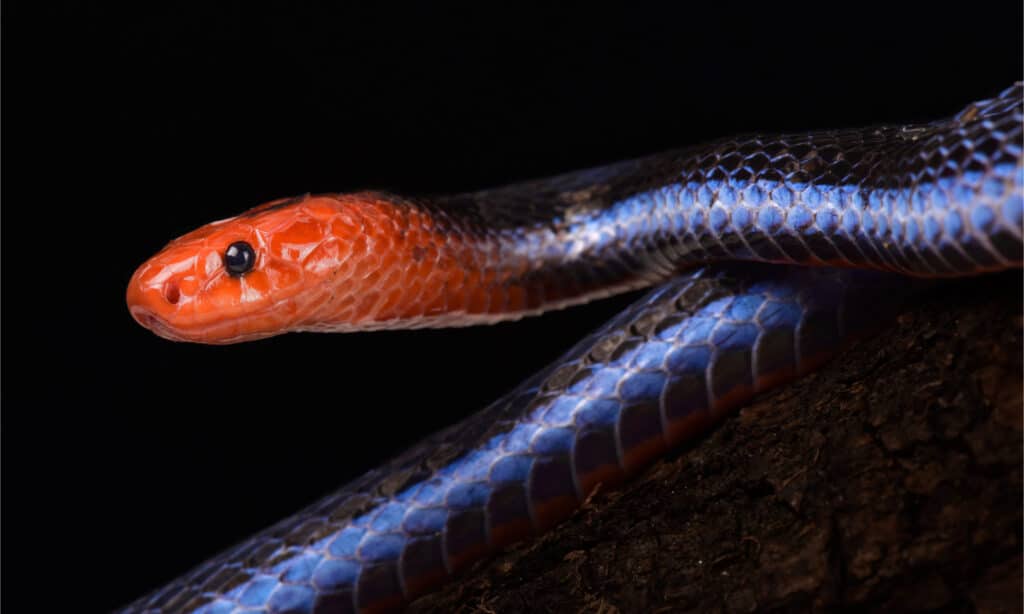Introduction
When it pertains to the fascinating globe of serpents, couple of varieties catch the imagination rather like the baby tiger snake. Recognized for their unique pigmentation and powerful poison, these snakes are an important part of Australia's distinct community. In this comprehensive article, we will look into various aspects of child tiger serpents, including their actions, environment, and exactly how to safely connect with them. Whether you're a wildlife enthusiast or merely curious concerning these creatures, comprehending baby tiger snakes can help foster a much deeper appreciation for nature.

Baby Tiger Snakes: What You Need to Know About Their Behavior and Habitat
What Are Infant Tiger Snakes?
Baby tiger snakes are adolescent forms of the highly venomous varieties understood scientifically as Notechis scutatus These snakes are primarily located in seaside regions of Australia, specifically in Tasmania and southern Victoria. As they expand, their coloration changes from an extra soft scheme to the particular yellow and black bands that provide their name.
One notable element of baby tiger snakes is their size; hatchlings commonly measure around 25-30 centimeters in size. Despite their small stature, they have an unusual amount of venom that can be destructive to people if bitten.
Physical Characteristics
Tiger serpents have numerous crucial physical traits:
- Coloration: The distinctive banding pattern usually becomes more noticable as they mature. Size: Grownups can get to sizes of as much as 2 meters. Body Shape: They have a robust body that aids in swimming and earthbound movement.
Where Do Infant Tiger Snakes Live? Understanding Their Habitat
Understanding the environment preferences of baby tiger snakes is necessary for both conservation efforts and public safety and security. These snakes flourish in different environments:
- Wetlands: Marshes and swamps provide enough searching grounds. Coastal Regions: Commonly located near coastlines where they can quest for prey. Woodlands: Dense greenery supplies cover from predators.
Geographical Distribution
Tiger snakes are mainly located along Australia's southerly coastline, including:
- Tasmania: Home to one of the most infamous populations. Victoria: Especially in locations near water bodies.
Are Tiger Snakes Venomous? A Deep Study Their Venom
One usual inquiry arises when going over baby tiger snakes: "Are tiger serpents poisonous?" The solution is a resounding yes!
Venom Composition
The poison of tiger serpents contains neurotoxins that can create paralysis, coagulopathy (blood clot issues), and potentially fatality if untreated. Here's what you need to know:
- Effects on Humans: An attack from a tiger snake can bring about signs and symptoms like swelling, discomfort at the bite site, nausea, and also respiratory failure.
Comparison with Various other Venomous Snakes
In contrast to various other Australian serpents such as the eastern brownish snake or king brownish snake, tiger serpent venom is considered among one of the most powerful. However, deaths are rare as a result of better medical therapies and accessibility to antivenom.
Behavioral Patterns of Child Tiger Snakes
Understanding just how infant tiger serpents behave is crucial for those who stay in or check out areas where these reptiles are prevalent.


Nocturnal Habits
Most infant Visit this page tiger serpents display nocturnal actions. They have a tendency to forage for food throughout cooler evening Australia's most venomous snakes temperature levels. This flexibility helps them prevent predators while improving their searching efficiency.
Hunting Techniques
Their searching strategies consist of:
- Ambush Predation: Waiting inactive up until target comes close. Active Foraging: Actively moving via greenery or along waterways searching for food.
First Help for Snake Bites: What You Must Know
Despite being interesting animals, encounters with infant tiger serpents can lead to harmful situations if bites occur. Understanding emergency treatment procedures can save lives.
Immediate Tips After a Bite
Remain calm; panic enhances heart rate. Immobilize the affected limb using a splint or bandage. Seek instant clinical attention-- antivenom might be necessary.Creating a Serpent Bite First Aid Kit
A well-prepared emergency treatment kit ought to include:
|Item|Function|| ------------------------------|--------------------------------------|| Compression bandage|To incapacitate the limb|| Splint|Supports busted bones or joints|| Antihistamines|Relieves allergies|| Emergency situation get in touch with numbers|Quick access during emergencies|
Common Misconceptions Concerning Tiger Snakes Debunked
Many misconceptions border these fascinating reptiles; allow's clarify some misunderstandings typically held by people.
Myth # 1: All Tiger Snakes Are Aggressive
While some individuals might https://skillstrainingcollege.com.au/snake-bite-first-aid-in-australia/ display protective behaviors when threatened, not all tiger snakes screen aggressiveness in the direction of human beings unless provoked.
Myth # 2: Infant Tiger Snakes Are Much Less Dangerous Than Adults
This myth could not be even more from the reality! Child tiger snakes consist of almost as much poison as adults relative to their size; hence they pose considerable risks if bitten.
FAQs Regarding Child Tiger Snakes
What do baby tiger snakes eat?- They largely eat small mammals, birds, frogs, and fish.
- Look for slender bodies with faint banding patterns that become extra noticable as they mature.
- Yes! Birds of target and bigger reptiles may target them.
- Typically every couple of weeks as they proliferate during their early life stages.
- While some people do keep them unlawfully without authorizations because of their harmful nature; it's normally not suggested offered their venomous status.
- With punctual clinical therapy-- including antivenom-- the survival rate is high!
Conclusion
In summary, understanding child tiger serpents-- what they eat, where they live, just how they behave-- can furnish us with valuable understanding regarding these exceptional yet harmful creatures. The value of education and learning bordering emergency treatment actions can not be overemphasized; recognizing exactly how to respond efficiently after a bite could save lives while promoting respect for our slinking neighbors within Australia's rich biodiversity range.
By appreciating these snakes' roles within environments-- and recognizing possible dangers-- we advertise conjunction rather than fear-based responses towards one another's presence in nature's grand tapestry! Whether you're an enthusiastic hiker contemplating your following experience or just interested regarding neighborhood wild animals encounters near home-- this overview works as your trusted reference factor on the enigmatic globe inhabited by our close friends-- the stunning baby tiger snake!